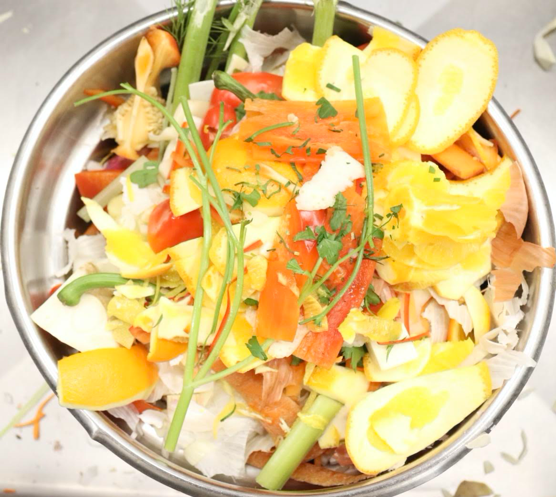Creativity and Collective Action amidst the COVID-19 Crisis
Students in Steve Finn’s spring special topics course on Food Waste (MET ML702 E1) are contributing this month’s blog posts. Today’s post is from Stacey Terlik.

There is no doubt that the coronavirus has impacted your life these past few weeks. It is a global pandemic that is changing all aspects of our society and has the potential to impact future policy. As a Gastronomy student, focusing on food policy, I cannot help but question: how will this pandemic influence food policies and future sustainable development goals? How will it affect food waste practices of corporations, businesses, and consumers? Will it perpetuate the problem of food waste? Or will it be a wakeup call about the fragility of our world?
It is evidenced by the empty shelves in grocery stores that people are buying way more than they would ever need during this unprecedented situation. There has been a rush on supermarkets, with people stocking up on foods they consider essential: canned, prepackaged, and processed foods. This undoubtedly will lead to a higher percentage of packaging waste then if people were strictly buying fresh foods. Moreover, once this crisis passes, what will happen to this overstock? Based on current food practices, it is likely these foods will go to waste and people will revert to their typical habits. However, it is possible that our society will learn from this experience and begin to place greater value on food and the environment.
In Sara Roversi’s presentation at the COVID-19 Virtual Summit, she frames the pandemic as an opportunity to reset, reconnect, and re-understand the power of food. She cites chef, Massimo Bottura, who asserts that “This virus has the power to make visible the invisible.”[1] While of course, this situation is a forced cultural reset, it creates the time and space to encourage individuals to think differently about food. People have to be creative with what is in their pantries, and they also have the extra time to access to cookbooks/ tutorials to learn how to can, preserve, and pickle produce in order to eliminate waste and ensure future nutrition.
Food creativity can also extend beyond the consumer level during this pandemic. We have seen innovative solutions by restaurants that have moved to takeout, created family meal boxes, or have sold out their inventory in attempts to sustain revenue and prevent food waste. In this same vein, because restaurants, businesses, and schools have been forced to close their doors, we have witnessed people taking care of each other in regard to food. Many organizations are distributing lunches to children in need and delivery services are transporting meals to vulnerable populations.
This notion of taking care of one another can be transformed from local to global food policies and systems. As Roversi stated, moving from “design thinking” to “prosperity thinking” can impact the ways in which we think about food difference, inclusion, diplomacy, and the environment.[2] While we may have to physically distance ourselves from one another right now, we still have the capacity to build an evolved food community that can positively impact global Sustainable Development Goals (SDGs). SDG 12.3 states: “By 2030, halve per capita global food waste at the retail and consumer levels and reduce food losses along production and supply chains, including post-harvest losses.”[3] My recommendation during this time of quarantine is to focus on the consumer aspects of this goal, as this is where advocacy and change can begin.
While we have the time and space, let’s reconnect to our roots, attempt to eat locally, experiment with new recipes, and use all the components of our food. The wild part is that with technology, we can all do this together. We can reach out to family and friends to make and eat dinner together over FaceTime or Skype. We can share recipes and cooking demonstrations over social media; it is all quite literally at our fingertips.
The biggest challenge for consumers will be the desire to return to their former food habits after this crisis. Of course, everyone is craving some semblance of normalcy, but let’s create a new normal of being intentional with our food procurement, production, and waste practices. While it may sound overly optimistic in the face of this trying time, simply modifying our food habits and taking care of one another can move us towards achieving each one of our interconnected SDGs.
[1] COVID-19 Virtual Summit – Day 2 – How Do Global Epidemics Affect the Future of Food? W/Sara Roversi. n.d. Accessed March 19, 2020. https://www.youtube.com/watch?v=J6eyuBl25ig.
[2] COVID-19 Virtual Summit – Day 2 – How Do Global Epidemics Affect the Future of Food? W/Sara Roversi. n.d. Accessed March 19, 2020. https://www.youtube.com/watch?v=J6eyuBl25ig.
[3] “12.3.1 Global Food Losses | Sustainable Development Goals | Food and Agriculture Organization of the United Nations.” Accessed March 20, 2020. http://www.fao.org/sustainable-development-goals/indicators/1231/en/.